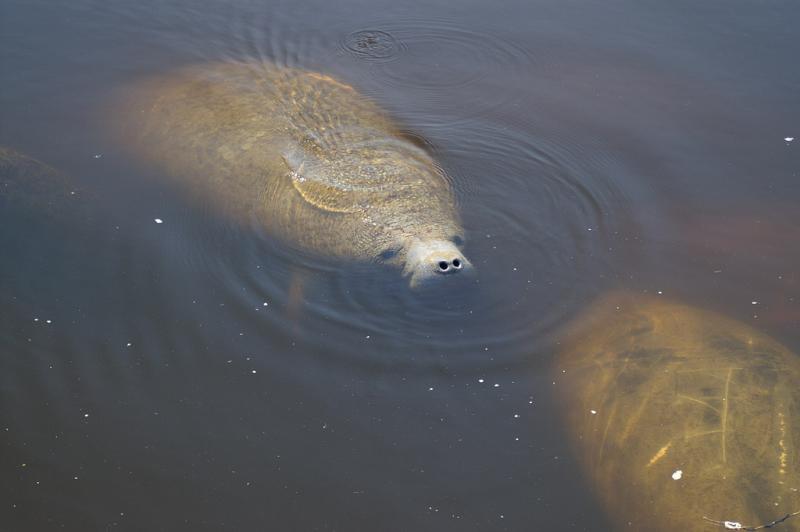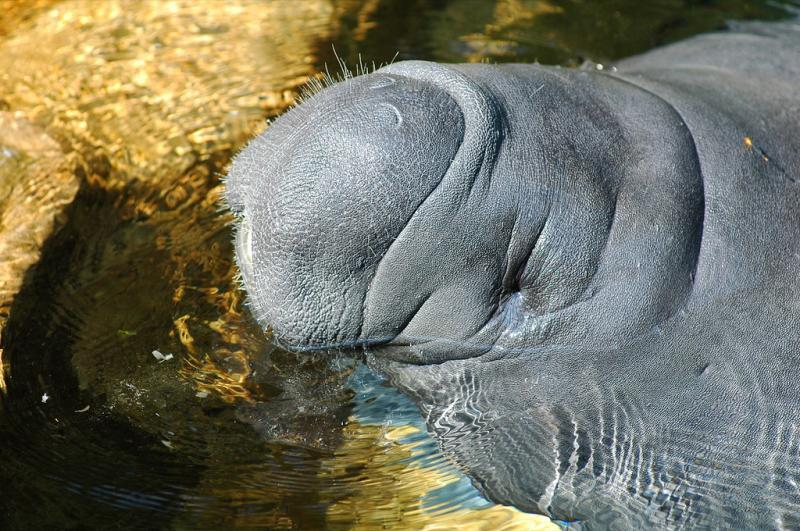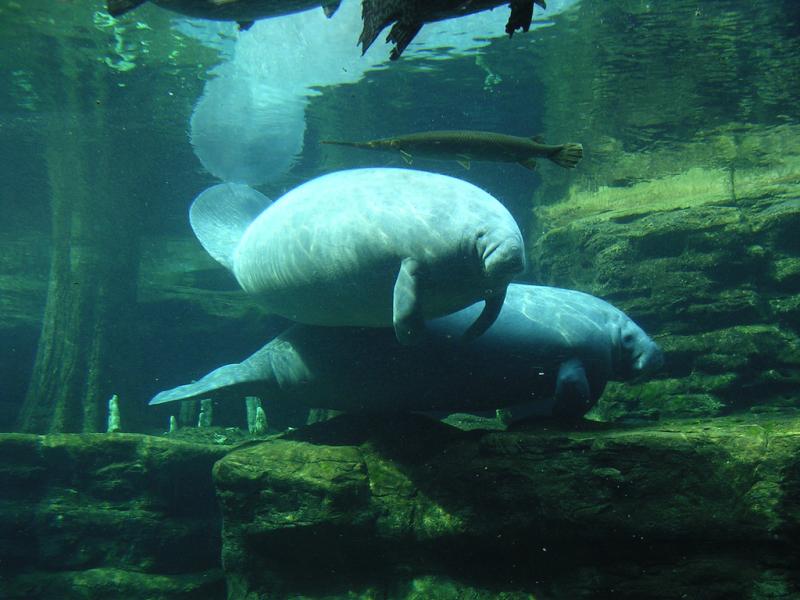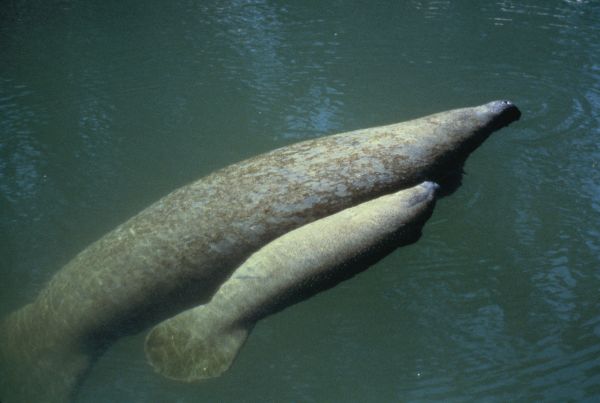Wildlife North America . com North American Animals - mamals, birds, reptiles, insects |
West Indian Manatee (Trichechus manatus)
West Indian Manatee photographed in area off the Caloosahatchee River, Fort Myers, Florida during winter. Photograph by Neil Louise. Some rights reserved. (view image details) 
West Indian Manatee - close up of head. Sea World, Orlando, Florida. Photograph by Zack. Some rights reserved. (view image details) 
West Indian Manatees. Sea World, Orlando, Florida. Photograph by Francesco. Some rights reserved. (view image details) 
Manatee Cow and Calf, Crystal River National Wildlife Refuge, Florida Photograph by Doug Perrine, U.S. Fish and Wildlife Service. License: Public Domain. (view image details)
WEST INDIAN MANATEE FACTS
DescriptionAdult Manatees are grey or brown. The newborn calves are darker, becoming lighter after about one month. They have seal-shaped body with very little body hair. They never leave the water, Other Names Caribbean Manatee, Sea Cow Size Length 2.8m - 3.5m. Weight 500kg - 1650kg. Environment warm, shallow water 1m - 5m deep in rivers, canals, saltwater bays, estuaries and coastal areas. Found in both freshwater and saltwater. Food mainly sea grasses growing on the sea floor, also other water plants. They sometimes graze on plants growing along the shore that hang low over the water. Breeding A single calf (rarely twins) is born after gestation period of 12-14 months. It can take up to 24 months before calf is fully weaned. The calf is 1.2m -1.4m long at birth and weighs about 30 kg Range the Caribbean, along the eastern coast of Central America and the northern coast of South America. In USA it is found mainly around Florida in the winter months, and as far as Virginia and Louisiana in summer. Conservation Status The conservation status in the 2004 IUCN Red List of Threatened Animals is "vulnerable". Classification
Home | Mammals | Reptiles | Birds | Insects | Privacy Policy | Disclaimer | Contact Us |